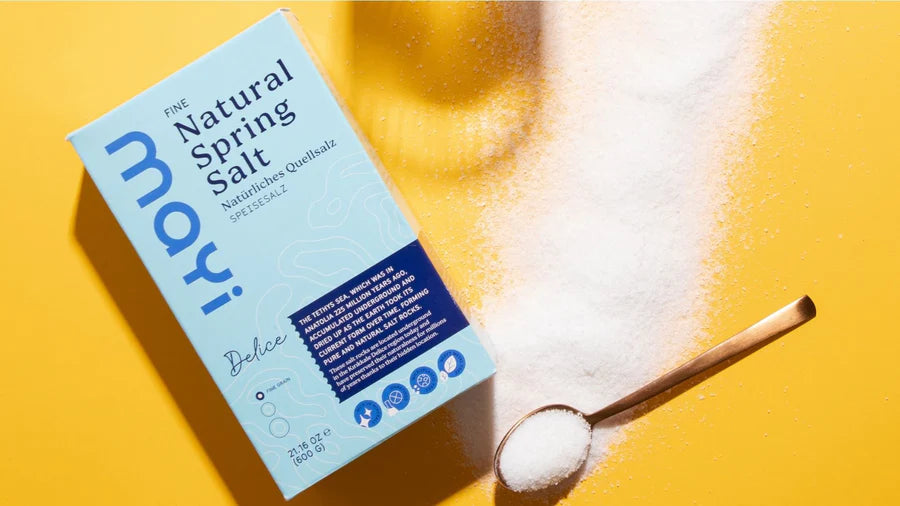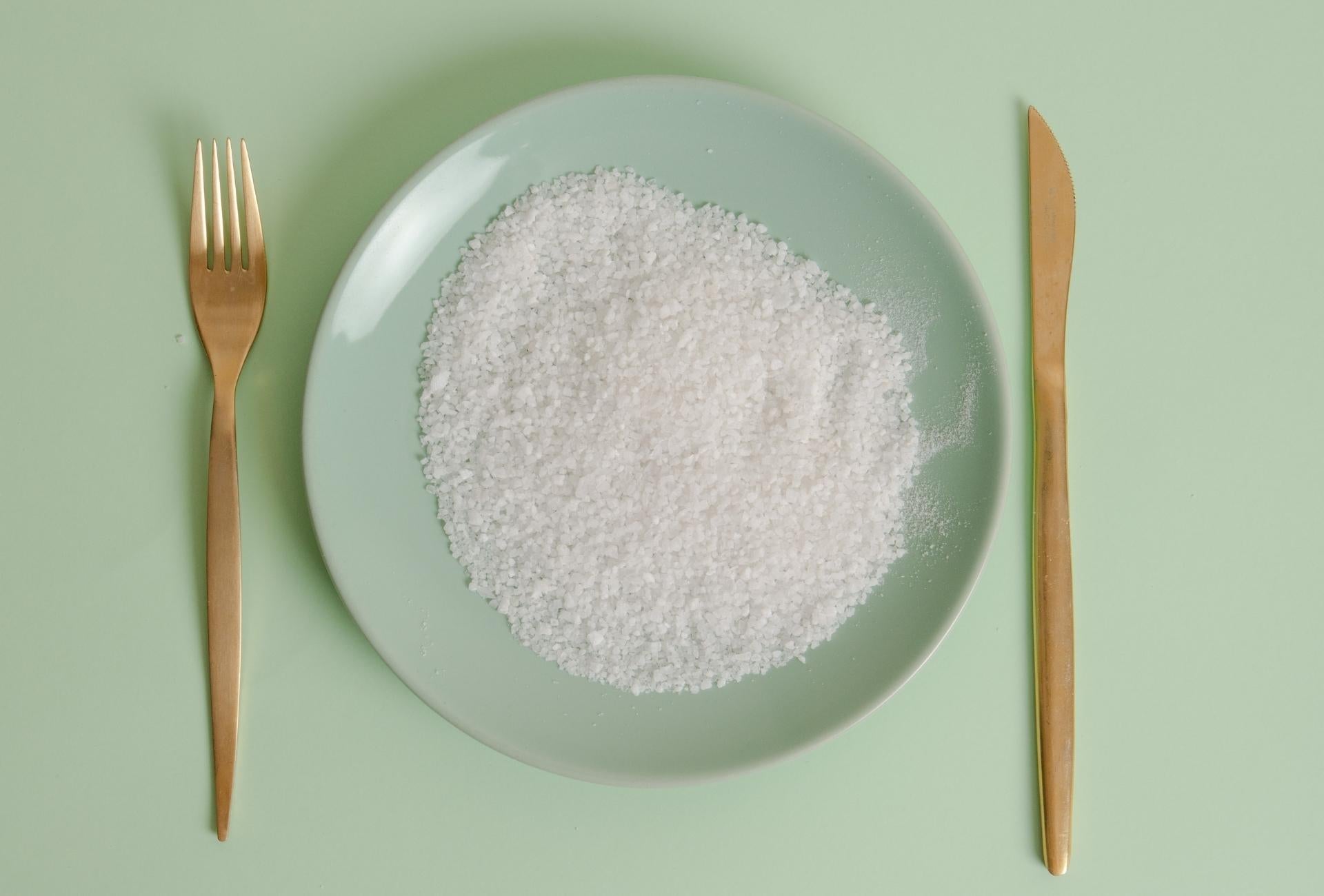Salt is an indispensable option for enhancing the taste of our meals. So how many different types of salt are there in the world? Salt is actually a mineral that has been present on Earth for millions of years. In ancient times, it was not only used for flavor but also for preserving food, and there are multiple varieties of salt obtained from different sources and produced using various techniques. These include pink Himalayan salt, rock salt, sea salt, lake salt, and other types of salt. When consuming salt, which is of serious importance to our health, we should make sure to consume the natural ones and avoid refined salts.
Himalayan Salt: Colorful and Full of Minerals
Himalayan salt is one of the preferred types of salt due to its high mineral content. It is produced in the Himalayan region of Pakistan and stands out from other types of salt with its pink color. Himalayan salt gets its pink color from high iron oxide values, and it is also recommended by experts. Generally, it is produced without being refined into large grains, and its high mineral content and natural structure offer many health benefits. Some of these benefits are:
- Assists in preventing chronic illnesses.
- Does not affect hypertension.
- Helps prevent water retention in the body.
- Increases energy levels through electrolytes and antioxidants.
Sea salt is a type of salt that has been used for centuries for food preservation and flavoring purposes. Even today, sea salt is commonly used. As the name suggests, sea salt is obtained by evaporating seawater using various methods. Unfortunately, due to the uncontrollable pollution of the seas in recent days, sea salts can contain a significant amount of microplastics and heavy metals. Although sea salt is often preferred for its taste, it may not be the best option for our health due to the presence of microplastics and heavy metals, which can accumulate in the body over time and lead to various diseases.
Rock Salt: Thousands of Years' Old Treasure of the Underground
One of the salt varieties frequently recommended by experts for its health benefits is crystal rock salt. Rock salt, which has been hidden underground for millions of years, is mined from salt caves and made available for sale. Produced without refining, crystal rock salt is one of the high mineral content salt varieties that can be chosen for its health benefits. When purchasing rock salt, we should ensure that it is unrefined and does not contain microplastics and heavy metals. Despite rock salt's existence for millions of years, some rock salt sources can be affected by environmental pollution due to the increasing pollution in the environment. This can lead to rock salt containing harmful substances like microplastics and heavy metals. Therefore, when choosing rock salt, we should make sure that the source is reliable. Clean and mineral-rich rock salt has various benefits for our health. Some of these benefits are as follows:
- It helps with muscle aches and cramps due to its high mineral content.
- Consuming it with lemon can assist in eliminating intestinal worms from the body.
- It can be beneficial for rheumatism and bone pain.
- According to some experts, it might have a positive effect on stress.
- There are expert opinions suggesting that it helps in balancing blood sugar levels.
Kosher Salt: The Staple of Jewish Cuisine
Kosher salt is a type of salt mainly preferred by Jews. Produced by evaporating saltwater, kosher salt differs from table salt and other salt varieties as it does not contain iodine. It is not completely white in color. Produced in coarse grains, kosher salt has a larger surface area and a slightly darker color. Kosher salt is made without any additives. It is commonly used in meat and fish dishes as its coarse texture adheres well to the meat and prevents any salt loss during cooking.
Fleur de Sel: The Luxurious Salt Known as 'Sea Flower'
Fleur de sel, which means "salt flower" in French, is actually a type of salt obtained through the evaporation of seawater. Its production relies solely on sunlight and wind. It is produced by collecting the delicate, crispy crystals that form on the surface during the evaporation of seawater. The production process is laborious, and it has a light grayish color. Despite being nearly the size of rock salt, its angular structure gives it a resemblance to a flower, hence the name "sea flower." It is preferred by the French as a finishing touch salt in desserts, chocolate, salads, seafood, and fish dishes.
Black Hawaiian Salt: Unique Salt Containing Activated Carbon
Black Hawaiian salt is typically produced in coarse grains. It is a type of salt that results from volcanic eruptions, and its black color is usually derived from charcoal. It gets its name from being extracted from the volcanic islands of Hawaii. Black Hawaiian salt adds a subtle flavor to dishes and is often used as a finishing salt, particularly in seafood dishes.
Red Hawaiian Salt: Iron-Rich Volcanic Rock Salt
Also known as Alaea salt, red Hawaiian salt is rich in iron oxide and gets its red color from the alaea substance. It is a type of sea salt that contains volcanic clay. Produced in coarse grains, red Hawaiian salt is one of the salt varieties with high mineral content due to its formation through volcanic eruptions.
Sel Gris: France's 'Grey Salt'
Obtained from the Celtic Sea or salt ponds, sel gris salt has a grayish color. It comes in both coarse and fine grind options and has a moist texture. Considered as France's famous salt, sel gris is regarded as gourmet salt and is a renowned choice for enhancing the flavor in dishes. It is often used in pastry making.
Smoked Salt: A Salt that Makes a Difference with its Aroma
As the name suggests, smoked salt is a type of salt that is produced by smoking with various flavors using wood fire. This salt variety is smoked for about 2 weeks, providing a rich and smoky taste to dishes. The taste of smoked salt varies depending on the type of wood used and the smoking duration. It is commonly used in grilled or roasted dishes, salads, pasta, and sandwiches to add a beautiful smoky flavor.
Blue Persian Salt: A Rare and Unique Mineral Source
Blue Persian salt, one of the rarest salt varieties in the world, is extracted from salt domes formed millions of years ago in Semnan, Iran. It gets its blue color from a mineral called sylvinite. Blue Persian salt has a lighter flavor compared to other salt types, and it is rich in minerals.
Epsom Salt: The Essential of Bathrooms
Epsom salt, also known as English salt, differs from other salts because it contains magnesium instead of sodium. It has a bitter taste and is commonly referred to as bitter salt. Epsom salt is not used for culinary purposes, unlike other salt varieties. It is mainly found in cosmetic and medical products and is preferred for use in baths and similar applications. Epsom salt has many benefits, some of which are as follows:
- It is effective in relieving muscle and cramp pains due to its high magnesium content.
- By promoting blood circulation, it reduces the risk of heart and vascular diseases.
- When used in foot baths, it helps reduce stress, prevent bad odors, and relieve fatigue.
- When used as a bath salt, it aids in the elimination of toxins from the body.
- When used in cleaning, it helps remove stains.
- When used for plants, it helps the plant grow healthier due to its mineral content and keeps pests away from the plant.
Spring Salt: Salts free from microplastics and heavy metals.
Spring salt, typically refers to the salt obtained from underground salt deposits formed by the evaporation of ancient seas. These deposits are mined from underground springs or wells. Spring salt is often considered to be a purer form of salt compared to sea salt because it is protected from modern-day pollutants and chemical waste found in oceans. It is typically used for culinary purposes and can vary in color and mineral content depending on the specific location where it is harvested.




